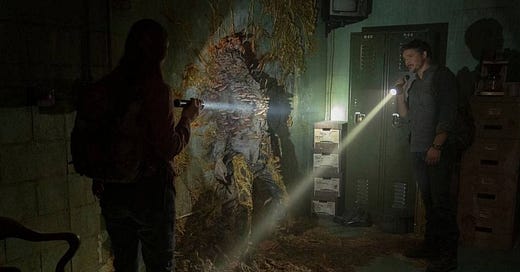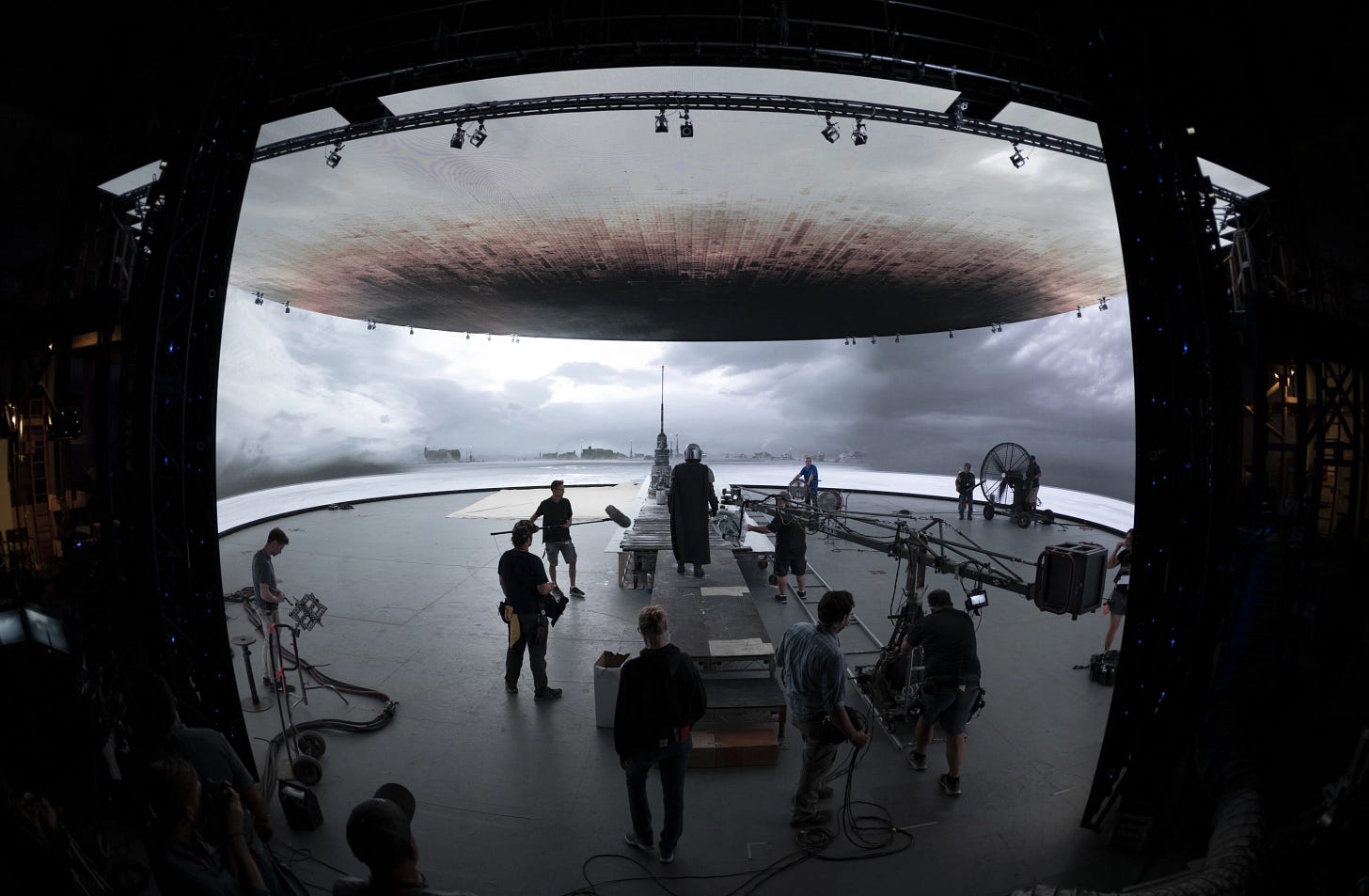Hi all,
I had to write this essay quickly because it has come to my attention something quietly monumental is happening this weekend. If you’re not aware, episode 2 of the HBO series “The Last Of Us” is airing this Sunday night. The series is already noteworthy for being a big budget, “prestige tv” adaptation of a video game (the first of its kind) but episode 2 is particularly consequential given the fact it is directed by a man with zero actual filmmaking experience. That’s right, the next episode of HBO’s current flagship series is directed by a game designer.
Neil Druckmann is the historymaker in question. The co-president of Sony Interactive Entertainment’s crown jewel studio, Naughty Dog, Druckmann made his name serving as the creative director and writer (sometimes co-writer) on critically acclaimed and best-selling games like The Last Of Us, Uncharted 4 and The Last Of Us Part II. As well as writing the games’ scripts, Druckmann also had input on the games’ overall designs and would direct voice actors and mocap artists when capturing footage for cutscenes.
In case you don’t know, cutscenes are sequences in video games when control is withheld from the player so that a narrative scene can take place. Dating back all the way to the 80’s, cutscenes have become more and more complex as video game technology evolved, often adopting cinematic language and convention. Modern games will now regularly feature filmic adornments such as faux film grain, motion blur, and lens flare. Notably, 2018’s God Of War made use of a long established cinematic technique by presenting the game (both gameplay and cutscenes) as though it was captured in “one shot”, an effect which can be seen in Alfred Hitchcock’s “Rope” (1948) and Sam Mendes’ “1917” (2019).
The influence hasn’t always been in one direction. Video games have left their mark on the film industry in the form of interactive movies like 1992’s “Night Trap” and 2018’s “Black Mirror: Bandersnatch”. And the video game engine Unreal has been used to create virtual backgrounds for Industrial Light and Magic’s “Volume” set which is used on shows like “The Mandalorian” (2019).
The relationship between the two mediums has changed and developed over time. The most stark change can be seen in the field of adaptations. Whereas in the 80’s through to the early 2000’s, officially licensed video games were often made to tie into the release of a film (like Atari’s ET: The Extra Terrestrial” (1982) and Activision’s “The Amazing Spider-Man” (2012)), nowadays, film and tv adaptations of video game IP has become the dominant form of adaptation between the two mediums (The Last Of Us, Uncharted, Cuphead, Cyberpunk and Sonic The Hedgehog have all had such adaptations released within the last year).
This trend can be chalked up to two factors. One being the increasing development time required to make a high quality game. Movie tie-in games would often be made with only a few months’ notice which is now no longer feasible given the long development cycle at AAA studios, which can last upwards of three years. And two being the improving quality of storytelling in the games medium. Story and characters aren’t always essential for an adaptation (bizarrely, a Tetris film has been shot and is set for release sometime this year) but they certainly help, and video game writing has been on a clear upward trend since the inception of the medium. This is in no small part thanks to the efforts of Naughty Dog and Neil Druckmann, after all UK film magazine Empire did refer to The Last Of Us as “gaming’s Citizen Kane moment” upon its 2013 release.
So, Sunday night’s episode can be seen as the culmination of decades of innovation, imitation and convergence across the mediums. Not only have games achieved cinematic level storytelling but the skills of video game artists have been recognised as transferable to the movies and TV.
What this means for the future of both mediums is uncertain. Filmmakers such as J.J. Abrams and Guillermo Del Toro have in the past expressed interest in working with game studios, could Druckmann’s transition from games to film prompt other filmmakers to consider doing the inverse? The Last Of Us HBO series has drawn criticism for not mentioning the game’s co-creator Bruce Straley in the series’ credits (the credit in question reads “Based on the PlayStation Studios video game created by Naughty Dog and written by Neil Druckmann”), which Straley has called “an argument for unionization” in the gaming industry. Could further intermingling lead to workers in the games industry following their film crew equivalents in embracing unionisation? Has Druckmann charted a new path for aspiring filmmakers? Will other game creatives (maybe Hideo Kojima?) follow his lead to the director’s chair?
The mediums are aligning in other ways too. For example, the theatrical release of Avatar: The Way Of Water (2022) across a slew of different formats (IMAX, Dolby, 2D, 3D, 4DX, etc.) has reminded me of video games releasing on different consoles. Each version has their own subtle advantages and trade-offs, similar to how a game may run at a higher frame rate on one console but a higher resolution on another — will film fans and critics have to become more technically savvy like hardcore gamers to differentiate between these different theatrical experiences?
The answers to these questions will only become known in the fullness of time but they’re interesting to consider in the wake of this weekend’s milestone. The influence of one medium upon another is, for me at least, one of the most interesting and exciting areas of media studies. Film and games are set to affect one another for decades to come, the results of this continuing cross pollination are as yet unknown but I expect it will yield many exciting ramifications.
Housekeeping
Hi again, I hope you all enjoyed this newsletter, please do feel free to hit me up with any and all feedback. If you did enjoy it, the best thing you can do is share it far and wide. I’ll have another newsletter headed to your inbox in the near future, I’m just waiting for the Oscar nominations to be announced to really get started on it (hint, hint).
Also, if you didn’t see already, there’s been some activity on my YouTube channel since my last email. I made a video essay dissecting Glass Onion and unravelling the mystery of the fabled “Golden Ratio”! Please do it give it a watch as I’m rather proud of it. As always, thanks for reading.





